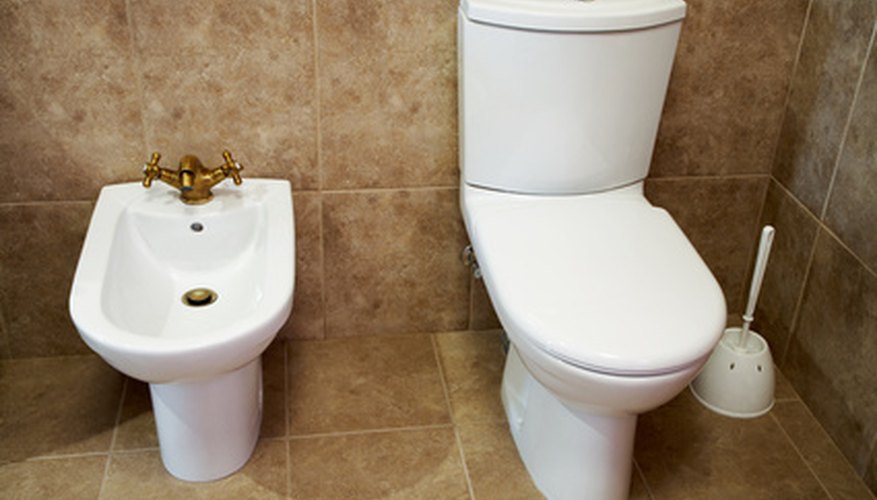The typical flush toilet has either an "s" or a "y" hook that attaches the flush handle to the water release or bottom seal, which when pressed causes water to flush through the bowl and all waste water to be removed. Over time these attachment pieces can erode or break due to constant use and contact with water. If this happens, don't immediately call the plumber and shell out serious money. Instead take on the job yourself.
- The typical flush toilet has either an "s" or a "y" hook that attaches the flush handle to the water release or bottom seal, which when pressed causes water to flush through the bowl and all waste water to be removed.
Locate the water valve, which is dedicated to the toilet water supply. These will often be set just beneath or behind the toilet tank on the bathroom wall. Turn the valve to the right, thus tightening it and stopping the flow of water. If you cannot locate this valve, turn off the main water line itself.
Remove the top of the toilet tank and set it aside. Flush the toilet once or twice until the water in the tank is completely gone. You should now be able to reach the Y hook, the chain which leads to the bottom seal and the full inner workings of the toilet.
Locate the broken Y hook, and remove it from the end of the chain and the toilet flush lever. Be sure to check the bottom of the tank for any broken pieces of the Y hook that may have fallen.
Judge the correct position for the new Y hook to attach to the chain. To do so, make sure the bottom seal is completely closed, then raise the chain to be even with the toilet lever when in the rest or closed position. This is where the Y hook should be attached to the chain.
- Remove the top of the toilet tank and set it aside.
- Judge the correct position for the new Y hook to attach to the chain.
Squeeze the Y hook and insert it through the toilet flush lever making sure that the bottom seal remains fully closed. If the bottom seal does not fully close, adjust the Y hook to give the chain more slack. Likewise if there is too much slack, adjust accordingly.
- Squeeze the Y hook and insert it through the toilet flush lever making sure that the bottom seal remains fully closed.
- If the bottom seal does not fully close, adjust the Y hook to give the chain more slack.
Open the water valve and allow the toilet tank to fill. Test flush the toilet, making sure there is no leakage into the lower bowl when the handle is in the rest position. The sound of running water will indicate that the bottom seal is not closed fully.
If there is leakage, make adjustments to the chain length accordingly.
TIP
You can save time by changing the Y hook without emptying the toilet tank. There is no need to drain it, except for the convenience of working dry. If you don't mind a little clean water in the way, skip the draining steps.
WARNING
Make sure to be gentle when closing and opening valves. In some cases these valves can be old, rusted or stiff. Breaking a valve will result in a water leak and far more work than the Y hook.
